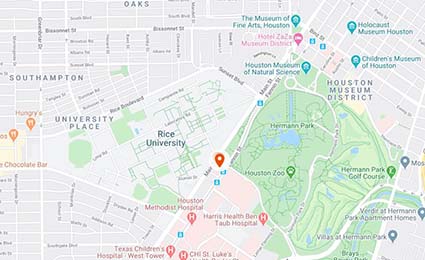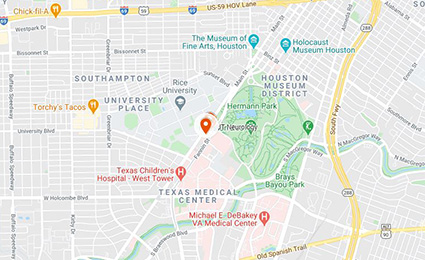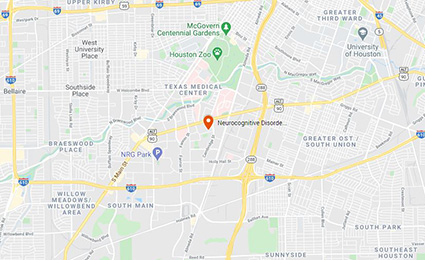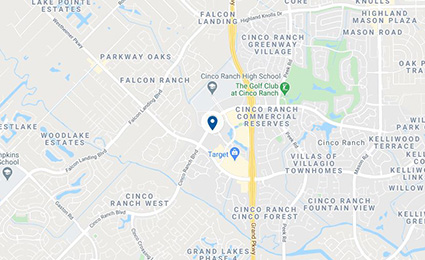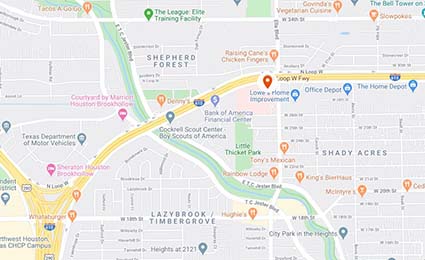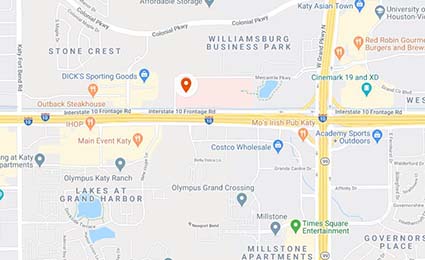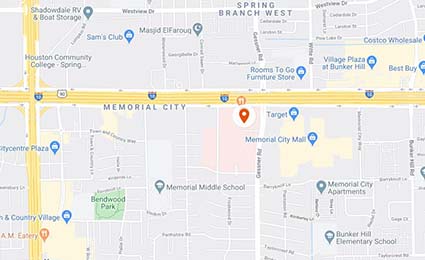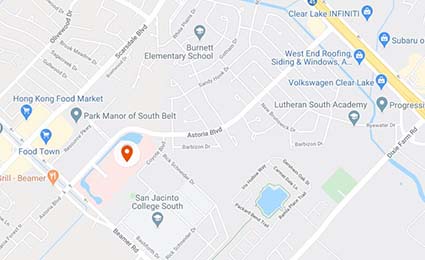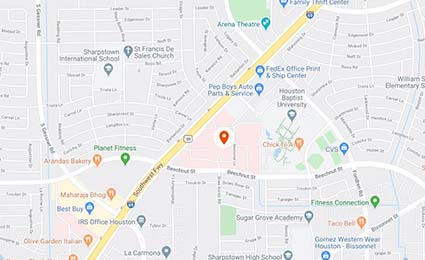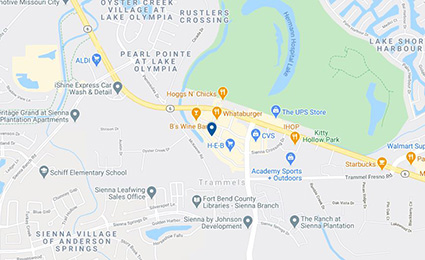Laminoplasty
What is laminoplasty?
Laminoplasty is a type of spinal surgery used to decompress spinal stenosis, a condition that can cause pain, numbness, and weakness in arms or legs. During surgery, a portion of the lamina bone (the roof of the spinal canal) is carefully cut. One side of the posterior elements of the spine is then hinged open to relieve pressure and give the spinal canal more space. The bone is held open with a metal piece. The procedure allows the spinal cord to heal, helping to reverse symptoms. Because it avoids fusion, laminoplasty patients typically retain a greater range of motion than they might with procedures using fusion.
What You Can Expect at UTHealth Neurosciences
The UTHealth Neurosciences Spine Center brings together a multidisciplinary team of board-certified, fellowship-trained neurosurgeons, neurologists, researchers, and pain management specialists who work together to help provide relief for even the most complex problems. Your team will share insights, leading to better treatment decisions and outcomes.
We first investigate nonsurgical treatment options, including medical management, pain management, physical therapy, rehabilitation, and watchful waiting. When surgery is needed, our neurosurgeons routinely employ innovative minimally invasive techniques. Throughout the treatment process, we will work closely with the doctor who referred you to ensure a smooth transition back to your regular care. While you are with us, you will receive expert care, excellent communication, and genuine compassion.
Reasons for laminoplasty
A doctor may recommend laminoplasty when more conservative measures, such as medication and physical therapy, fail to relieve symptoms of arthritis, bone spurs, disc herniations, or fractures. Laminoplasty may also be recommended for patients who have pain, weakness, difficulty walking or experience problems with hand-eye coordination as a result of other spinal conditions, such as cervical stenosis or cervical spondylotic myelopathy.
What to expect during surgery and recovery
While under anesthesia, the surgeon will make a small incision in the back of the neck. The surgeon will carefully cut the lamina on both sides of the affected vertebra, then moving the freed flap of bone open to relieve pressure on the spinal cord by functioning like an open door on a hinge. Laminoplasty differs from laminectomy in the amount of bone and muscle tissue that must be removed or displaced during the procedure. Your spine surgeon will give you specific information related to your condition and lifestyle goals, as well as a detailed description of the surgery and instructions on how to make the best recovery.
Anatomy of the neck and spine
The spine is divided into the following regions:
- The cervical region (vertebrae C1-C7) encompasses the first seven vertebrae under the skull. Their main function is to support the weight of the head, which averages 10 pounds. The cervical vertebrae are more mobile than other areas, with the atlas and axis vertebra facilitating a wide range of motion in the neck. Openings in these vertebrae allow arteries to carry blood to the brain and permit the spinal cord to pass through. They are the thinnest and most delicate vertebrae.
- The thoracic region (vertebrae T1-T12) is composed of 12 small bones in the upper chest. Thoracic vertebrae are the only ones that support the ribs. Muscle tension from poor posture, arthritis, and osteoporosis are common sources of pain in this region.
- The lumbar region (vertebrae L1-L5) features vertebrae that are much larger to absorb the stress of lifting and carrying heavy objects. Injuries to the lumbar region can result in some loss of function in the hips, legs, and bladder control.
- The sacral region (vertebrae S1-S5) includes a large bone at the bottom of the spine. The sacrum is triangular-shaped and consists of five fused bones that protect the pelvic organs.
Spine Disease and Back Pain
Arthrodesis
Artificial Disc Replacement
Cauda Equina Syndrome
Cervical corpectomy
Cervical disc disease
Cervical discectomy and fusion
Cervical herniated disc
Cervical laminectomy
Cervical laminoforaminotomy
Cervical radiculopathy
Cervical spondylosis (degeneration)
Cervical stenosis
Cervical spinal cord injury
Degenerative Disc Disease
Foraminectomy
Foraminotomy
Herniated discs
Injections for Pain
Kyphoplasty
Laminoplasty
Lumbar herniated disc
Lumbar laminectomy
Lumbar laminotomy
Lumbar radiculopathy
Lumbar spondylolisthesis
Lumbar spondylosis (degeneration)
Lumbar stenosis
Neck Pain
Peripheral Nerve Disorders
Radiofrequency Ablation
Scoliosis
Spinal cord syrinxes
Spinal deformities
Spinal injuries
Spinal fractures and instability
Spinal Cord Stimulator Trial and Implantation
Spinal Fusion
Spinal Radiosurgery
Spine and spinal cord tumors
Spondylolisthesis
Stenosis
Tethered spinal cord
Thoracic herniated disc
Thoracic spinal cord injury
Transforaminal Lumbar Interbody Fusion
Vertebroplasty
Contact Us
At UTHealth Neurosciences, we offer patients access to specialized neurological care at clinics across the greater Houston area. To ask us a question, schedule an appointment, or learn more about us, please call (713) 486-8100, or click below to send us a message. In the event of an emergency, call 911 or go to the nearest Emergency Room.
